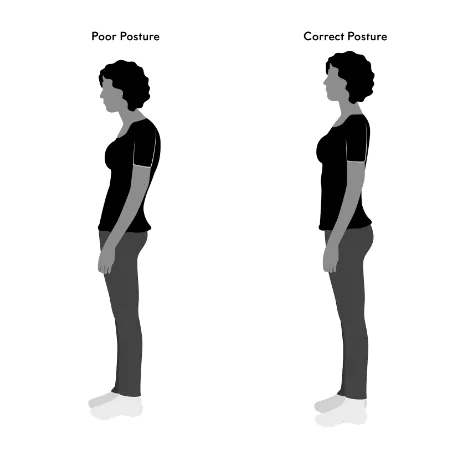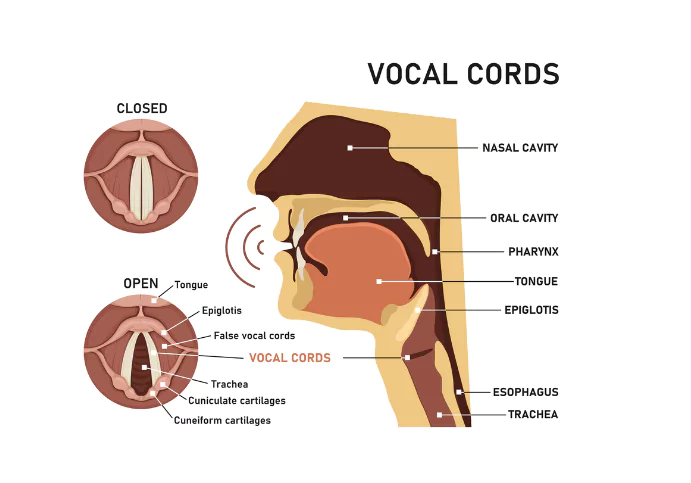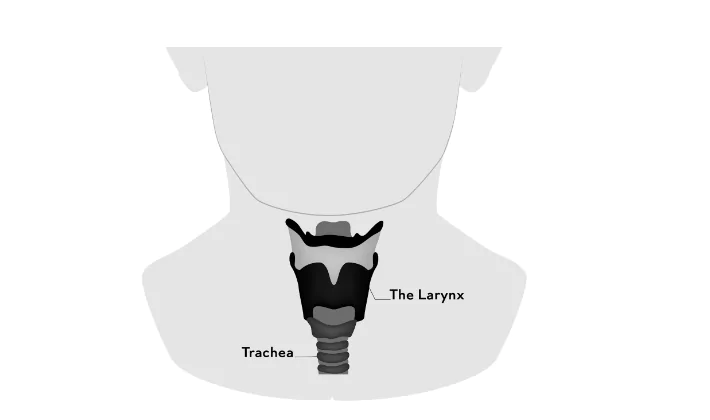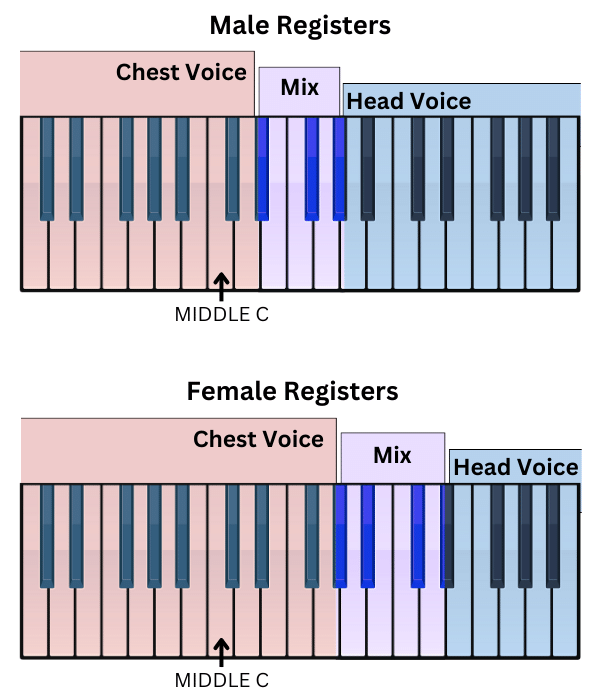Singing can be intimidating to learn, but if you're willing to put in some time and effort, you can improve at any age or skill level. Knowing where to start and what to work on is key to fast improvement.
As a voice teacher, I have trained thousands of singers (including celebrities and leading voice teachers). If you are a beginner singer, you are in the right place. I am John Henny, the author of the best-selling book Beginning Singing.
The following is my basic approach for beginners and professional singers. Read on to get my top ten tips to find your best singing voice.
In here, you’ll learn:
- 10 tips on how to sing better and in tune
- Vocal techniques to enhance your voice
- How to properly care for your voice
You Can Sing!
Only a small fraction of the population "can't sing."
There are usually two causes:
The first is extreme damage to the tissues or muscles of the vocal cords or neurological issues that interfere with controlling the voice. Again, these issues would need to be "extreme."
The more common worry is, "am I tone deaf?" Tone deafness is rare (approximately 4% of the population deals with this issue). The symptoms usually include an inability to process and enjoy music. It can even interfere with the ability to understand language.
If you love music, you are likely not tone-deaf. Later in this article, I will show you how to increase your ability to sing in tune. You can also get my "Sing In Tune" mini-course for free.
Tips For Better Singing
Tip #1: Assess Your Voice
The first thing I do with a new student is a vocal assessment. This gives me a snapshot of where the student currently is and a starting point. Let's get a starting point, so we know where to focus our efforts. Sing part of a familiar song (Happy Birthday will do). Note: Extra points if you record yourself.
Now to do an assessment ask these questions to yourself:
- How did it feel overall?
- Did you run out of air?
- Did you have a breathy voice?
- How was your vocal tone?
- Did you feel any strain?
- Was there tightness in your throat muscles?
- How about your jaw or tongue?
If you weren't happy with the sound of your voice or experienced strain, don’t worry, You have taken an essential first step on the road to mastering your instrument. You likely don't have a bad voice; you just need to learn basic singing techniques.
Tip #2: Breathing
Breath is one of the most essential fundamentals of singing. There are different breathing techniques for singing. I will show you what I find works for most singers. Stand tall with your chest slightly lifted and take a deep breath.
Feel your belly expand in all directions (focus on bringing the breath into your back and your front and sides). This diaphragmatic breathing will ensure the diaphragm muscle drops to get an efficient breath.
Now slowly let the breath out while making a hissing sound. Be sure to keep your chest slightly raised and your ribs expanded throughout the exhale. The proper breathing technique is often called "support" because this controlled stream of air will help "support" your voice. We want to watch out for pushing the air out too quickly or letting the chest and ribs collapse.
We are aiming for breath control - which will help give us overall vocal control. Now do this controlled flow of air as you hum. Can you feel the balance between your airflow and your vocal cords?
- If it feels a little strained, make your hum a little softer and flow a bit more air.
- If the tone is breathy, increase the intensity and volume while backing off the airflow.
The balance between the airflow and vocal cord resistance or closure is vital. Let's look at our vocal cords and how to get a healthy cord closure against our air.
Tip #3: Vocal Cord Closure
We want to ensure we maintain balanced resistance with our vocal cords (also called "vocal folds"). If your singing feels overly breathy or squeezed, this is likely a vocal fold closure issue. We want to eliminate any poor technique in this area.

When singing or speaking, the vocal cords close over the air flowing up from our lungs, creating and building air pressure. At some point, the air pressure overpowers our vocal cords, and they pop open. The compressed air now leaves the vocal cords as a vibrating sound wave.
Good closure is the key to creating good sound waves, which are essential for good singing. I use the following daily to help drill balanced cord closure into my muscle memory.
- First, give out a long breathy sigh. This is not enough closure.
- Now grunt like you are lifting something heavy. This is too much.
- Finally, say MMMM like you are eating your favorite food. This is just right!
Use this MMMM on different scales making sure to maintain this healthy balance. Keep this edgy sound going as you move through your range. Practice this daily to grow and keep this essential balance and coordination.
Here's a video demonstration:
Vocal Technique
There are different schools of vocal technique, but they more or less focus on the same basic goals:
- Breath control
- Vocal registers
- Vocal Tone
- Vocal Range
Proper technique will also cover vibrato, intonation (singing in tune) as well as dynamics and style. You will want to work on vocal exercises that focus on your current issues to help balance the voice.
Tip #4: Vocal Range
Vocal range is the distance between your lowest usable note and your highest. Most people think they have a limited natural range and can go no further. The fact is the typical range of notes for the average singer is 2.5 to 3 octaves!

If you haven't spent a lot of time working on expanding your range, I promise you can sing higher than you currently are. Your vocal cords can be stretched and strengthened through consistent practice.
Here are a couple of great stretching exercises to help increase range:
Vocal Glide
Make a joyous "whoo-hoo" sound. Did you feel your voice vibrate in a higher place in your head? This is called "head voice," more on that later.
Now say a robust, low-pitched "AAAAAH!" (make sure it's not a breathy sound). Feel that vibrate in your chest? This is "chest voice, " which I will also discuss later.
Now say AAAAH-OOO starting on a low AAAAH and gliding up to your current highest note on OOO. You can also reverse direction - start on the high OOO and glide down to the AAAAH
It sounds like this:
Make sure you keep your tall posture when doing this exercise, and be sure to let the air do the work, not just your vocal cords.
Voice Straw
A straw is a great way to find your upper range without straining. The straw will create back pressure on your vocal cords that will help them vibrate without squeezing.
Here is a short video to give you the basics:
You can also get my free straw warmups course by CLICKING HERE.
Tip #5: Stable Larynx
Your larynx is commonly called the "voice box." It's the part of your body that houses the vocal cords.

When singing higher notes, the larynx will often want to rise up, creating tension and strain. The ability to control and stabilize your larynx is a key singing skill. Here is one of my favorite exercises to help you gain control over your larynx.
Say GEE while making a dopey sound (think Patrick from Spongebob Squarepants or Yogi Bear). Starting on a comfortable note, sing this GEE up to a higher note.
Be sure not to lose the dopey sound quality. You might find the higher notes need to be lighter or softer, which is okay.
As you keep the dopey sound, place your finger on your Adam's apple. You want to make sure it's relatively stable as you go higher. If it moves too much, concentrate on exaggerating the dopey sound as you go up in pitch.
This will help stop excess muscles, including those associated with swallowing, from interfering with your voice.
Tip #6: Vocal Registers
An accomplished singer will likely spend much time balancing their vocal registers.The registers are primarily the aforementioned head voice and chest voice, and the very special mixed voice.
Let's find each of these registers:

Chest Voice
Place your hand on your sternum then Say AH. Feel the vibrations in your chest? This is why it's called "chest voice."
Chest is the foundation of your singing voice, and we want to ensure it is vibrant and not weak or breathy. I often spend the first minute of my singing practice in my chest voice, making sure my voice is working well before moving on to higher notes and songs.
While chest voice is the easiest of the vocal registers, it can cause several vocal problems, mainly because the voice can get stuck there and not transition into the other registers.
Head Voice
The head voice register is the higher part of our range. Say WOOO like you are cheering. Feel the vibrations move up higher in your head? This is head voice.
While head and chest can be relatively easy to find in isolation, the real skill is blending them together, so there is no noticeable separation between the two.
Mixed Voice
Mixed or middle voice is the secret weapon of so many legendary singers. It is a seeming blend of your head and chest voice.
Why is this important?
Do you know that place in your voice where it either wants to strain and shout or flip and fall apart to a weak, breathy voice? This is the dreaded vocal break.
The break lies between your chest and head voice. The secret is to blend from one to the other seamlessly. Mix is how we do this. I will spend part of a voice lesson working on a student's mix. I also dedicate a portion of my book, Beginning Singing, to working on mix.
Here are a couple of exercises to help you find mix:
- Using the right vowel sound can be helpful.
- Say BOUX as in BOOK
- Starting in your lower register, take this BOUX sound up into your break area.
- Watch that the vowel does not open up to BAH, as this may cause you to stay stuck in your chest voice and begin to strain.
- Don't let the vowel change to BOO as this can cause you to flip suddenly into head voice.
Make sure you maintain proper posture and that your head position is relaxed and not tensing as you go higher. Note that different voice types will feel the mix at different points in their voice.
Watch the demonstration below:
Be patient with this area of your voice as it takes time to develop a solid technique. Mix is a coordination you will work on for the rest of your singing life.
Tip #7: Resonance
Do you find your vocal tone lacking? Is your voice thin? Do you struggle with nasal singing? Does your voice sound harsh?
These issues can all be improved by working on resonance. Resonance happens when the sound waves coming from your vocal cords are enhanced by your vocal tract (your throat and mouth). If we shape our vocal tract correctly, our resonance will enhance and amplify our voice.
However, there are a number of ways this can go wrong. Typical vocal tract issues include:
- Squeezing and raising the larynx.
- Spreading the mouth too wide.
- Not dropping the jaw as we sing higher.
- Over-tensing our tongue muscles.
Another typical problem is a nasal sounding voice. This is caused by not lifting the soft palate properly, allowing our sound waves to go into the nasal cavity.
Here is a great way to reduce nasality:
- Start to yawn. Do you feel your soft palate lift?
- Now sing a note with your lifted soft palate. You should hear and feel a diminished nasality.
I have an article on finding resonance HERE, complete with free exercises. I highly recommend checking this out.
Tip #8: Vibrato
Vibrato is likely used by most of your favorite singers. While vibrato is a hallmark of classical singing, it is also important in popular styles. Vibrato is the movement of the pitch above and below the note you are singing. This happens on average between 6 and 8 times per second.
While many of us have some amount of vibrato we can access, it usually requires regular practice to be available across the entire range. Here are some exercises to help discover vibrato in your voice:
- Hold out an OO on a comfortable note.
- Now place a hand on your tummy and press in and out quickly.
Hear the up-and-down modulation in your voice? This is a type of vibrato. Now let's refine it so we can do it without using our hand.
- Now do a light OO in your head voice.
- Using that OO, turn it into your best scary ghost sound.
This is closer to your natural vibrato.
- Finally, say the word GO on a note in your chest voice.
- Don't make the note too loud - we don't want to bring in too much muscle.
- Now imagine you are on the verge of crying.
- Let that emotion come in as you hold out GOOO.
As you work this, you should start to feel your natural vibrato coming in more and more. Now do this on a series of notes, bringing the vibrating emotion throughout your range.
Here's a video example to help you find vibrato:
Tip #9: Singing in Tune
This is also known as intonation. If you are out of tune, you are not necessarily a bad singer, but you may need to fix some bad technique. If you have worked on your technique but still have trouble matching pitch, you are likely not tone deaf (tone deafness is quite rare).

Many singers who think they are tone deaf are rather "tone shy." This means they need to work on their mind/voice connection. Since we don't have frets like a guitar or keys like a piano, we need to connect the mind to the singing voice to hit the right notes. Here are my best ear training tips to get you in tune.
Try this mental exercise:
- Play a musical note on a guitar or piano, making sure the note is comfortable for you to sing.
- Listen carefully to the note.
- Now create the note in your mind as strong and loud as possible.
- Once this note is strong in your mind, sing the pitch.
- Play the note again.
How did you do?I bet you either nailed it or came pretty close. That's because we need a strong connection between our brain and our instrument, and we need to think notes before we sing them.
This is what experienced singers do.
- Now play a song from your favorite famous singer.
- Listen to the voice closely.
- At some point, mute the volume but keep "singing" in your mind.
- Now turn the volume back up.
Did your mind stay in key with the song? Try these mental exercises a few times a day, and you should find your "tone deafness" going away. As a special bonus, you can get my Sing In Tune mini-course for FREE. Simply enter your email address for instant access.
Tip #10: How to Practice Singing
If you want to improve your singing, you need to practice - there's no getting around it. However, you don't need to spend hours a day on your voice. In fact, you shouldn't work the voice as long as other instruments because of potential fatigue. Your sessions should last at least 20 minutes. You can then work up to 45 to 60 minutes a day.
If you want to practice more, I would break it into two daily sessions. Consistency is most important. It is better to do shorter sessions daily than occasional longer sessions.
Warming Up
A lot happens when we sing, and we first need to warm up the voice. This will stretch our muscles and ligaments, as well as increase blood flow and reduce swelling. We want to be well hydrated when singing, so I always drink plenty of water.
I am often asked what temperature the water should be. I recommend lukewarm water as very cold water can interfere with the "warming up" process.
Note: Be sure to maintain correct posture throughout your vocal practice. We sing with the entire body and don't want any tension or poor posture to get in the way.
I start by using gentle sounds such as OO and EE - gliding up and down to begin accessing more of my range. Most voices need 5 to 10 minutes to warm up.
Working Out
I then increase the variety and intensity of my vocal exercises. I will work on trickier vowels or sustaining notes longer. You can work on gaining more power or agility exercises with quick notes for speed as you progress.
Songs
After a period of more intense exercises, I then move on to songs. I recommend you have three songs you are working on at one time. The first would be a less challenging and familiar song that allows you to ease into this part of the session.

This song is a great opportunity to work on your musical skills - rhythm, dynamics, etc. Then I would have a song that has some challenges, but not overwhelming ones.
Finally, a song that pushes you a bit, perhaps there are several notes in your break area, or the range makes you stretch. You want to find the sweet spot with the difficulty levels.
You won't progress as quickly if all your songs are too easy. But if your songs are too hard, you will become frustrated and likely create vocal imbalances and issues.
This is where a good singing teacher can be a valuable guide. They will be able to access your voice and help you choose appropriate songs (and exercises) to keep you learning at your optimal rate.
And finally, be sure to set aside time to just have fun with your favorite songs without worrying too much about technique. We want never to lose the pure joy of singing!
Bonus Tips:
Take Care of Your Instrument
Vocal health for singers is vitally essential because, unlike other instruments, we can't go to the music store and buy a new voice if it becomes damaged.

Your voice is your body, so your overall health affects your singing. Eating healthy and having a regular exercise routine will directly impact your instrument. Also, smoking (of any substance) and alcohol abuse are terribly damaging.
Be sure to drink plenty of water and eat water-rich foods like fruits and vegetables. Hydration is absolutely necessary to keep our vocal cords buzzing freely without glops of disrupting phlegm. You also want to avoid shouting or attempting to sing with a sore throat or tired voice.
Once you pursue this wonderful instrument, you must treat it with care and respect. If you ever have voice issues lasting more than 5 days, you should seek the help of a qualified ear, nose, and throat doctor (ENT).
A good ENT can help keep you singing for a lifetime!
Singing Lessons
There is no faster way to get better at singing. Finding the right voice teacher and regular practice sessions will supercharge your vocal training and progress.
If you are interested in exploring one-on-one lessons via Zoom with one of my experts. I hope you have found these vocal tips helpful. Please feel free to comment below; I'd love to hear what you think.

JOHN HENNY
John Henny is a leading vocal coach in the music industry, with over 25 years of experience, renowned for his teaching skills. His techniques are designed to maintain vocal health, improve overall sound quality, eliminate voice cracks, and extend the singer’s range, allowing them to express themselves without limitation.
